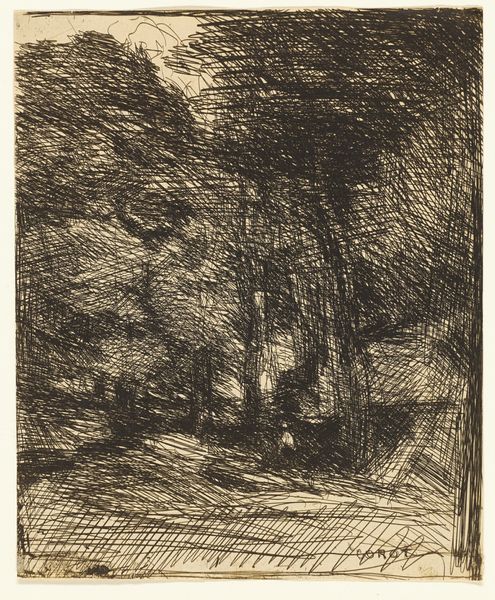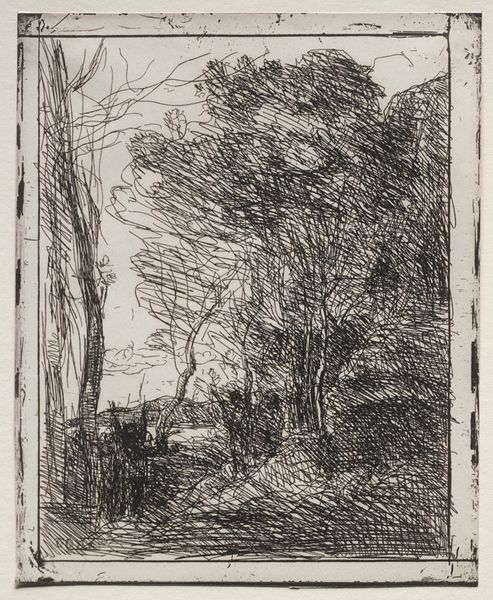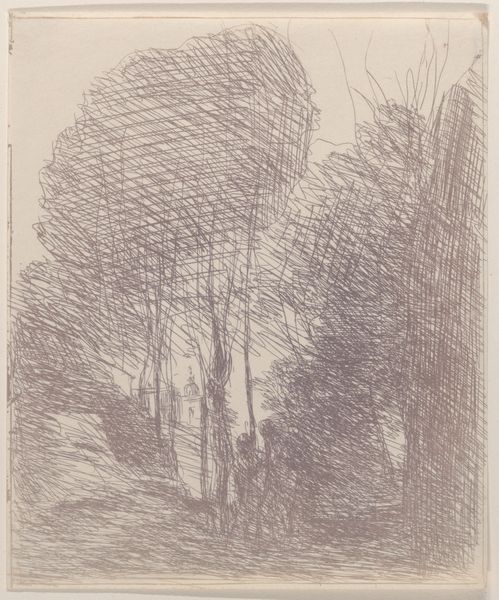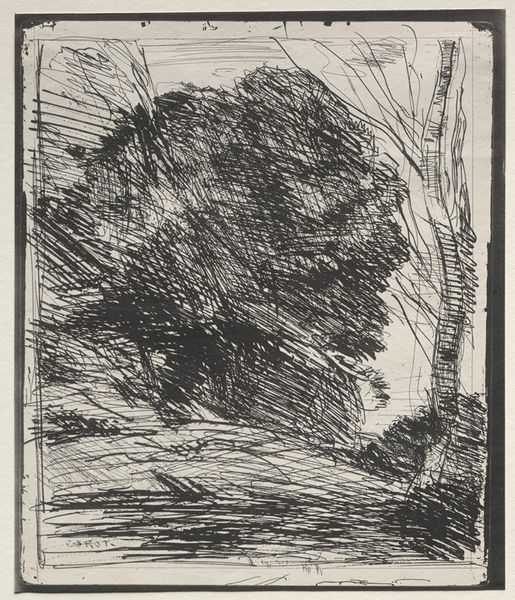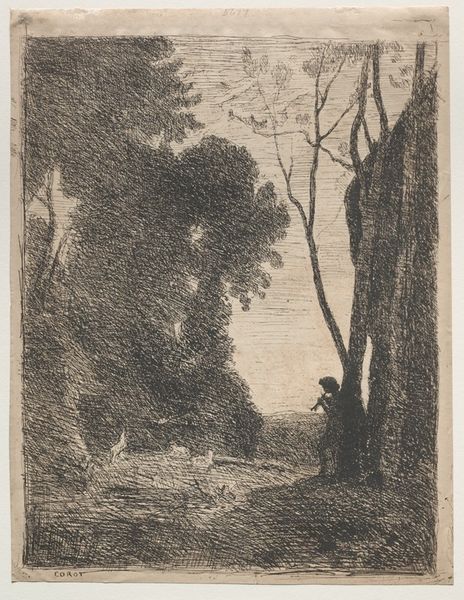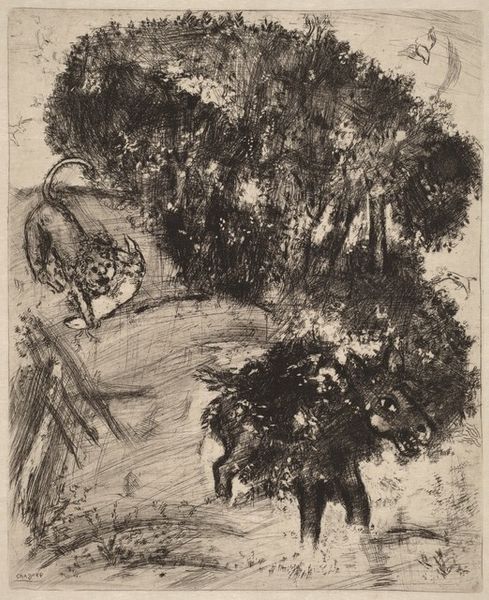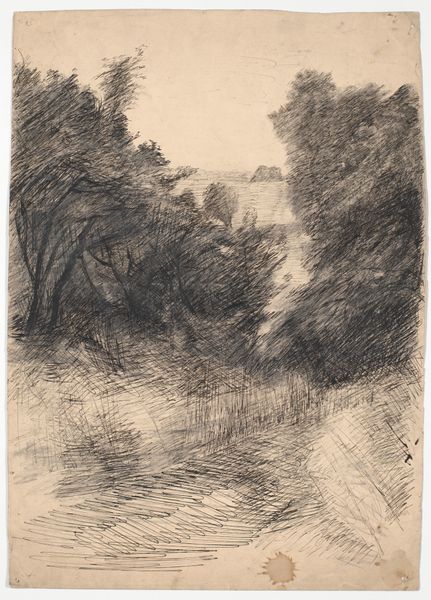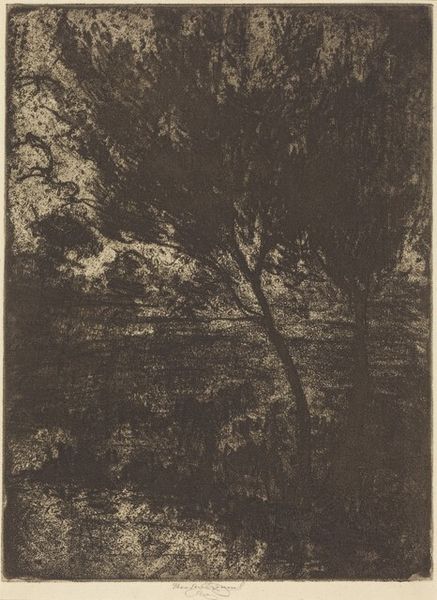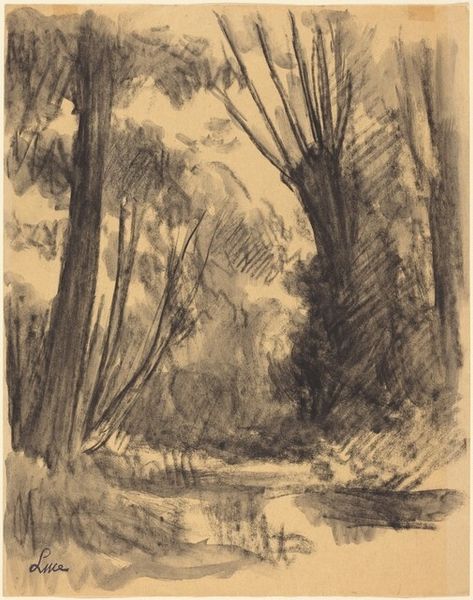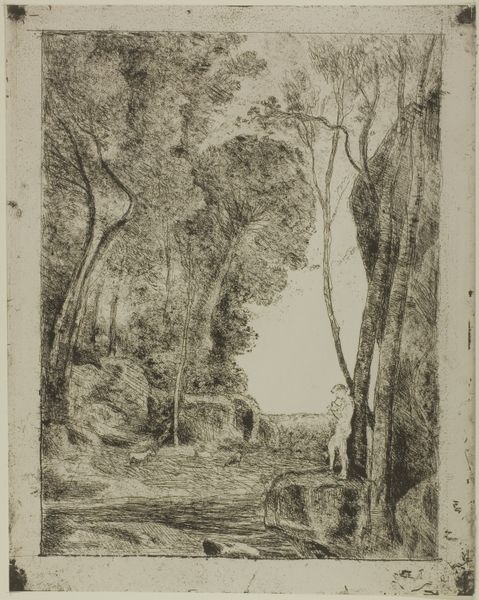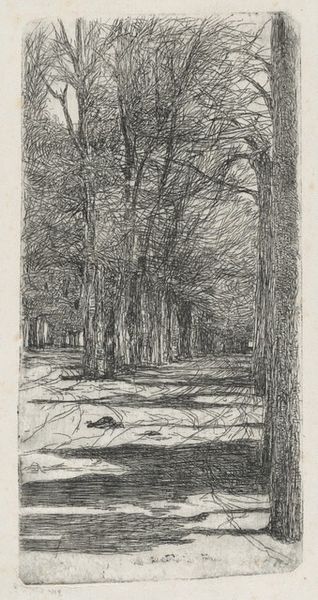
drawing, print, etching
#
drawing
# print
#
pen sketch
#
etching
#
pencil sketch
#
landscape
#
line
Copyright: Public Domain: Artvee
Camille Corot created this print, “A Souvenir of the Bas-Bréau”, by etching lines into a metal plate, which was then inked and pressed onto paper. The image of a wooded landscape emerges from a dense network of hatched marks. The etching technique itself has a fascinating social history. It allowed for the relatively easy reproduction of images, making art more accessible. But it also demanded skilled labor: the careful drawing, the acid-etching process, and the printing itself. The effect here is one of both immediacy and considered craft. Corot was working at a time when printmaking was becoming increasingly industrialized, yet he retained a clear connection to the hand-made quality of the medium. The resulting image hints at the nostalgia for the natural world, even as the means of its creation were tied to the modes of production reshaping the 19th century. It is this tension between the handmade and the machine-made that gives the print its lasting resonance. By focusing on the materials, making, and context, we gain a richer understanding of the artwork's full meaning, blurring the lines between fine art and craft.
Comments
No comments
Be the first to comment and join the conversation on the ultimate creative platform.
